by Mary Howard
I was personally elated on August 31, 2017 when we opened our #G2Great doors to welcome guest host Laura Robb. Laura has long been a professional inspiration to many educators, but her presence was an added blessing for me since she is also a treasured friend. On this night, we gathered enthusiastically around the Twitter screen to soak in Laura’s immense wisdom and celebrate her newest book, Read Talk Write: 35 Lessons That Teach Students to Analyze Fiction and Nonfiction (Corwin, 2017).
In his opening foreword, Harvey “Smokey” Daniels eloquently describes why we need Laura’s remarkable book:
For decades, we have understood in principle that kids need to talk about their reading. But in practice, we have been slower to develop a broad repertoire of classroom structures that stimulate, facilitate, guide, and assess that kind of abundant intelligent talk. Laura Robb to the rescue once more. (xiii)
Laura Robb to the rescue indeed. In 249 pages of brilliance, she offers a treasure chest of powerful practices that are sure to promote the abundant intelligent talk that will lift student voices into the learning air in celebratory harmony. Laura’s book beautifully organizes 35 powerhouse lessons into six thoughtful categories of student centered dialogue:
- Turn-and-Talk
- Whole Class Discussions
- Partner Talk
- Small-Group Discussions
- In-the-Head Conversations
- Teacher-Student Discussions
Our #G2Great conversation with Laura reflected a clear shared commitment for engaging students in meaningful reading and writing talk. But Laura lives and breathes this commitment in her own work in classrooms and through her writing. After the chat, Laura shared four key ideas with me via email that she hopes our #G2Great family will take away from this experience And so as I reflect on her email message and her #G2Great chat tweets, I’d like to depart from my traditional chat overview by merging Laura’s messages and tweets into four Conversation Inspirations. These will offer a professional guide as you generate the abundant intelligent Laura-inspired talk our children deserve:
Conversation Inspiration 1: Create a Culture that Celebrates Student Talk
I’m hoping teachers re-evaluated the importance of talk. Talk is an oral text, and students do a great deal of thinking, considering, and refining to craft a response others can understand. I see talk as a prelude to meaningful writing. (Laura Robb’s email message)
My reflection: Our first step is to take professional responsibility for this process. We cannot create an instructional setting where student-centered talk is valued by students until we are willing to hold this process in the highest esteem. Before we can create an environment where the high quality talk we desire for students becomes a habit of mind, we must acknowledge our role in this process. When talk is viewed as a professional must then it will become the WHY that drives us each step along the way to this rich collaborative dialogue. Laura reminds us that this is not an occasional event to be scheduled at key intervals in the day, but a non-negotiable daily priority that permeates the very air that we breathe across every learning day. 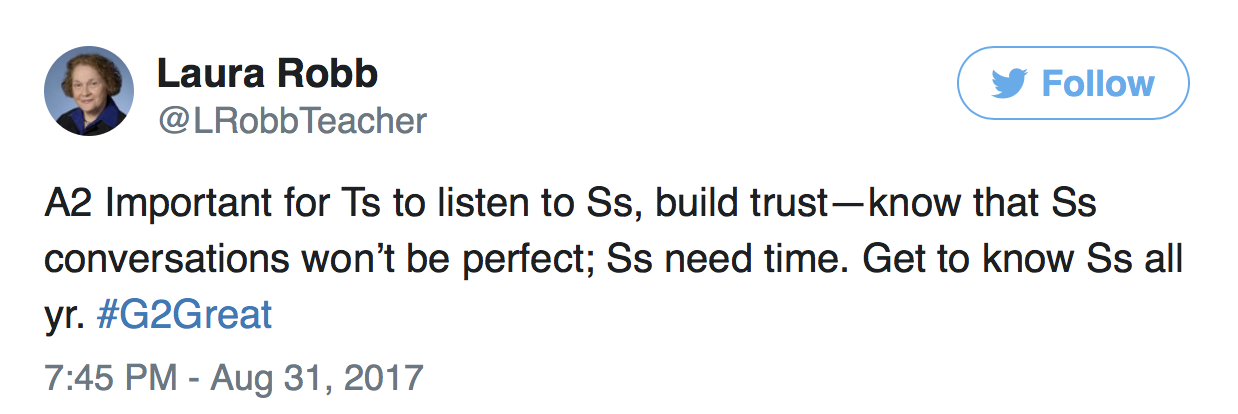
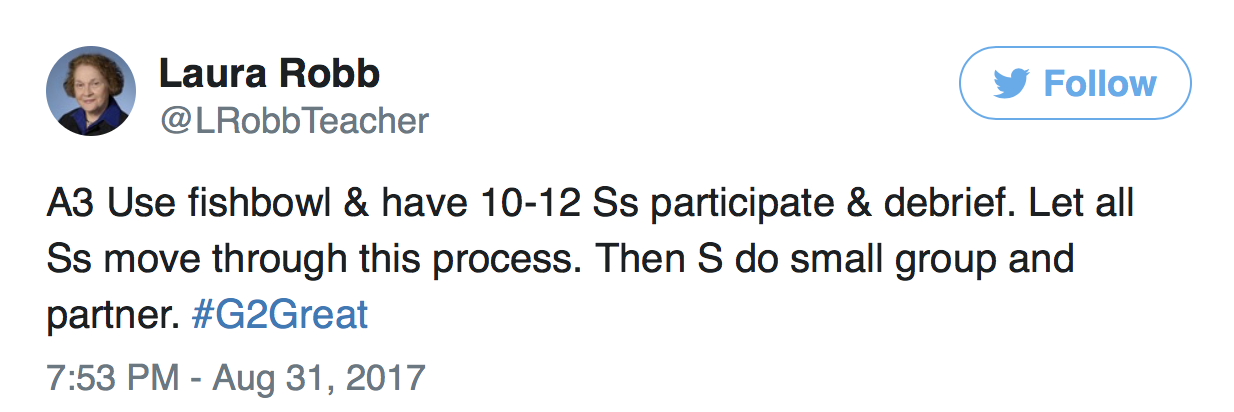
Conversation Inspiration 2: Celebrate the Talk Journey with the Gift of Time
It’s important to know that it takes time and practice for student-led discussions to run smoothly and achieve depth of thinking! The gift of time, practice, and debriefings are crucial. (Laura Robb’s email message)
My reflection: In order to create the powerful discourse we deem worthy of our students, we must first build a strong bridge between teacher supported and student engaged talk. We begin by creating a safe and supportive environment that will nurture the kind of engaging talk we want for students. Within this safe environment we can then offer the instructional models to demonstrate each step of the talk process. These scaffolded supports allow us to show our students what rich dialogue looks like, sounds like and feels like so that we can begin to relinquish responsibility to them for accountable talk. With productive and meaningful talk always in our sights, we heed Laura’s wise reminder that we cannot rush this supportive phase.
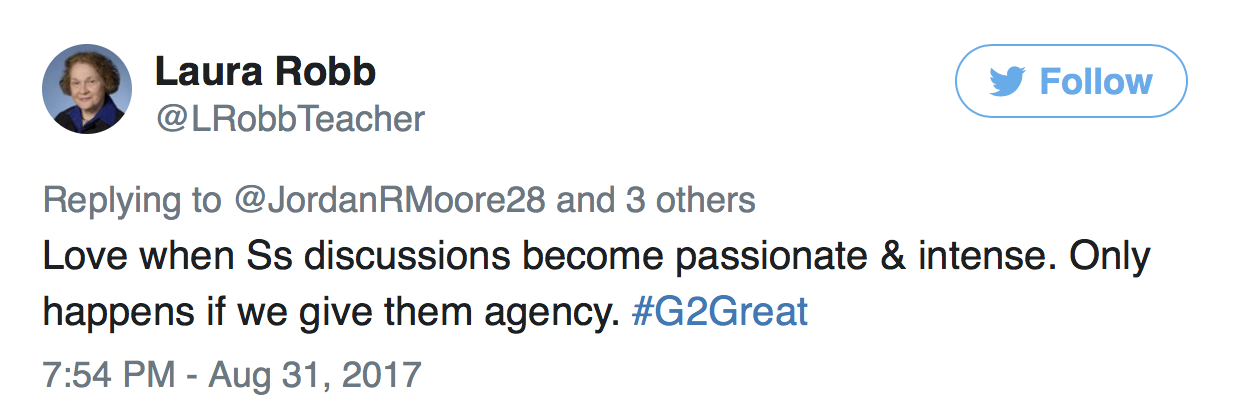
 Conversation Inspiration 3: Hand over the Reins of Student Ownership
Conversation Inspiration 3: Hand over the Reins of Student Ownership
When students lead discussions, they have multiple opportunities to observe peers reasoning process as well as valuing multiple interpretations supported by the text. (Laura Robb’s email message)
My reflection: This release of responsibility allows us to create a forum that will support the kind of real life conversations we want students to have with their peers. These authentic conversations are grounded in ‘passionate and intense’ talk that we want students to continue to have with others long after they leave our classrooms – the very kind of conversations we have in our own lives. Once we have set the talk stage with support, we then begin to step back and allow students to craft the structure of these conversations so that they can assume control of the decision-making process. We trust our students to make these important decisions based on the foundation we have put into place as our role shifts from a supportive one to that of facilitator as we use these experiences to fine-tune and extend learning.

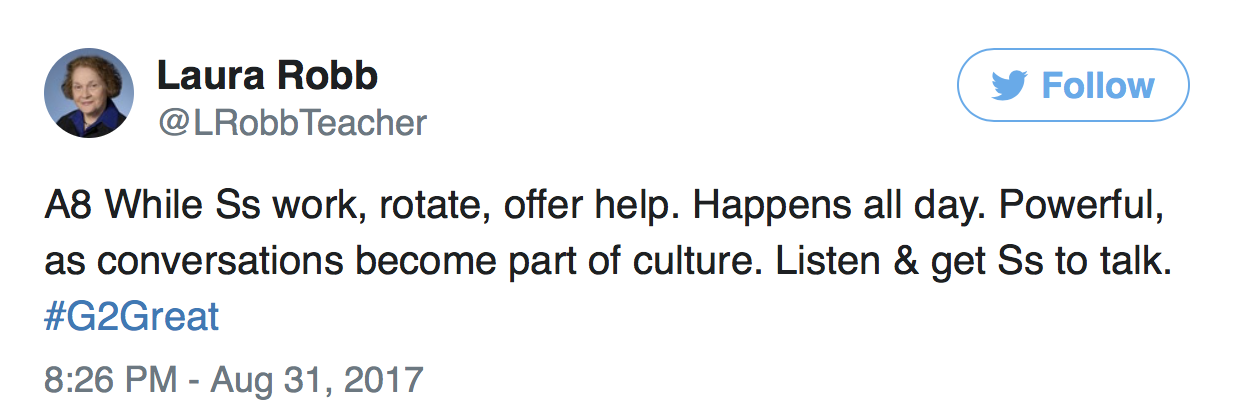 Conversation Inspiration 4: Value the Talk Process Through Your Actions
Conversation Inspiration 4: Value the Talk Process Through Your Actions
Don’t grade talk. Talk is thinking out loud and writing is thinking on paper. Talk should always precede writing. Teachers can model various journal responses that can be assessed and have students write a paragraph that explains their position or defends a point of view. I don’t grade readers’ notebooks as I view those as exploratory thinking that students can refine, adjust, and change. Out of notebook writing can come assessment projects. (Laura Robb’s email message)
My reflection: I opened this overview by emphasizing that we must begin by valuing the talk process as we make it integral to every instructional day. We maximize our framework by stretching talk across all content areas but this is only the beginning. We are cognizant that all we choose to say and do will send a message to students about how we view these experiences as we allow these conversations to grow with students. In other words, our day-to-day actions and how we treat the talk experience with the respect it deserves will impact students most. Making time and space for student-centered talk is important but we must also show in every aspect of our practices that we value an organic process for meaningful dialogue. We do this by choosing not to apply a grade to this process-based practice, by creating experiences worth talking about and by celebrating that students assume increasing control. We acknowledge that student-centered talk cannot be relegated to a list of narrow questions that revolve around trivial conversations. Above all we trust students to reach ever higher as their conversations begin to take on a life of their own and we honor this transformational student-driven process each step of the way.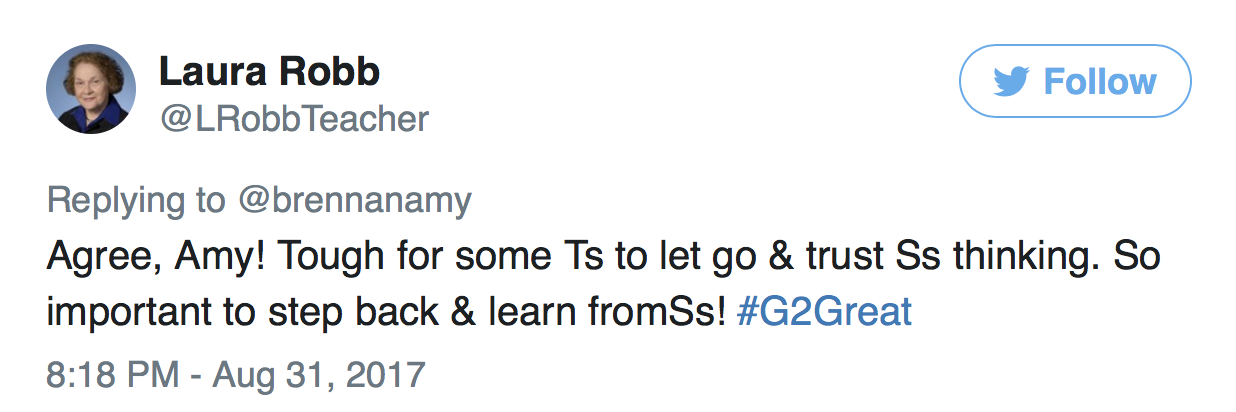
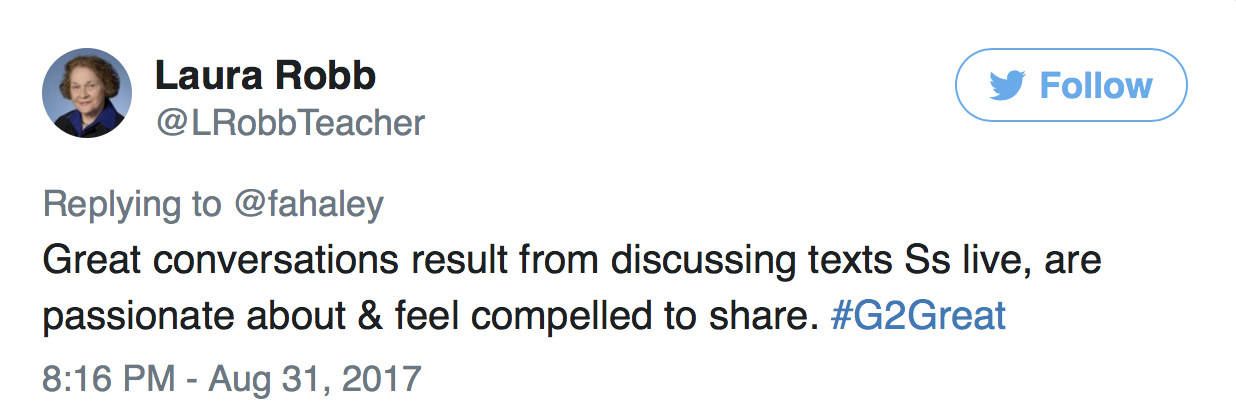
Read, Talk, Write reflects Laura’s commitment to the role student talk plays in the learning process. We are grateful for her deep belief in the power of literary conversations and her support in helping us to envision this process through her very wise eyes. In the closing words of her wonderful book, Laura extends each of us an invitation to join her on this journey so that we too can breathe life into abundant intelligent talk. Laura’s vision of daily student engagement in literary conversations is sure to inspire dedicated educators everywhere to thoughtfully craft rich student-led dialogue across the learning day:
You are the key to developing highly literate students. And when you make learning meaningful for students with literary conversations and writing about reading, you keep students at the center of instruction, inspiring them to read, think, talk, and write– and continually improve their reading and writing expertise. (page 236)
We accept your invitation Laura and we will carry each of your conversation inspirations in our back pockets as we put your words into action where it matters most – in high impact talk infused classrooms across the country!
More inspired tweets from our amazing #G2Great family
Links to Connect to Laura Robb
Read Talk Write by Laura Robb (Corwin)
https://us.corwin.com/en-us/nam/read-talk-write/book249342#resources
Evan Robb & Laura Robb: http://therobbreviewblog.com
Laura Robb Website: www.lrobb.com
Laura Robb and Eva Robb Website www.robbcommunications.com
Podcast with Laura and Evan Robb https://therobbreviewpodcast.podbean.com





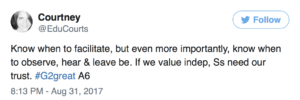


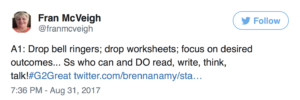





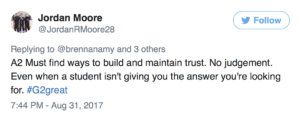


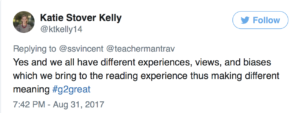
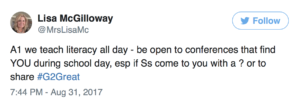







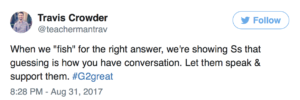

Beautiful post, Mary and Laura! The collaborative spirit that led to the four main points of:
1) A culture of student talk,
2) The talk journey needs the gift of time,
3) The reins of student ownership, and
4) The value of talk before writing.
Are these huge shifts in all classrooms? Not necessarily. However . . . attitude, values, beliefs, and actions must all be aligned in order for students to be successful AND in charge of their own learning!
<3